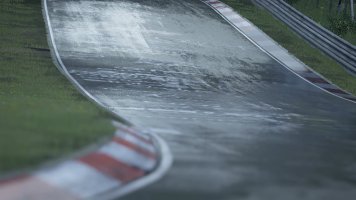Currently I'm trying to get the live envmap to become a reference for general object reflections.
Mipmapping is really powerful because it softens the reflection map as if the reflecting material were rough, when infact it is still perfectly sharp, just the reflection itself is 'rough'
However I currently struggle with the sharp edges where a bright item (ie the sun) rolls onto another face of the cube map. It has a nasty sharp edge.
Also, the filtering for mipping looks pyramidal, so the sharp sun simply errs towards being a bigger sharp square still, rather than a big soft spot.
So first question, is it possible to avoid the sharp edges in the cube maps in any elegant way (shouldn't the mip really look across the edges of the cube map?)
Is there a way to blur the mipped cube map so the result is more pleasing? I've seen a blur map used for a bloom but it was for a 2d tex blur, not a cubemap blur. I'm struggling to make anything work that looks nice.
Lastly, the sky model. Is it technically right by now? I still get a deep orange opposite the sun set or sun rise, despite most real life sunsets and sunrises being opposed by a blue sky.
I was reading about someone implementing the mie/ray system and had this issue and apparently it is wrong, the sky shouldn't be symmetric at sunrise/sunset, but asymmetric.
Hmmmm
Dave
Mipmapping is really powerful because it softens the reflection map as if the reflecting material were rough, when infact it is still perfectly sharp, just the reflection itself is 'rough'
However I currently struggle with the sharp edges where a bright item (ie the sun) rolls onto another face of the cube map. It has a nasty sharp edge.
Also, the filtering for mipping looks pyramidal, so the sharp sun simply errs towards being a bigger sharp square still, rather than a big soft spot.
So first question, is it possible to avoid the sharp edges in the cube maps in any elegant way (shouldn't the mip really look across the edges of the cube map?)
Is there a way to blur the mipped cube map so the result is more pleasing? I've seen a blur map used for a bloom but it was for a 2d tex blur, not a cubemap blur. I'm struggling to make anything work that looks nice.
Lastly, the sky model. Is it technically right by now? I still get a deep orange opposite the sun set or sun rise, despite most real life sunsets and sunrises being opposed by a blue sky.
I was reading about someone implementing the mie/ray system and had this issue and apparently it is wrong, the sky shouldn't be symmetric at sunrise/sunset, but asymmetric.
Hmmmm
Dave











